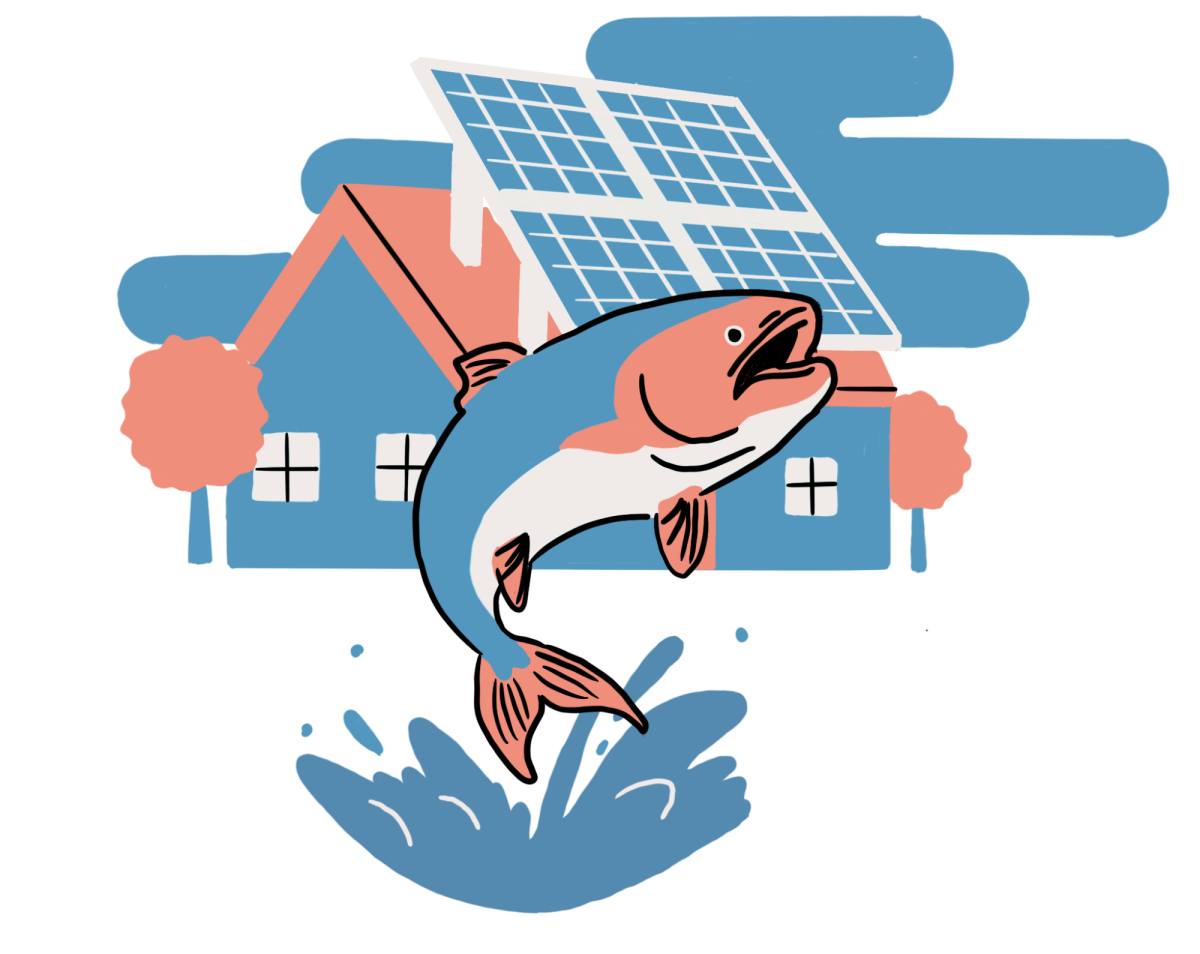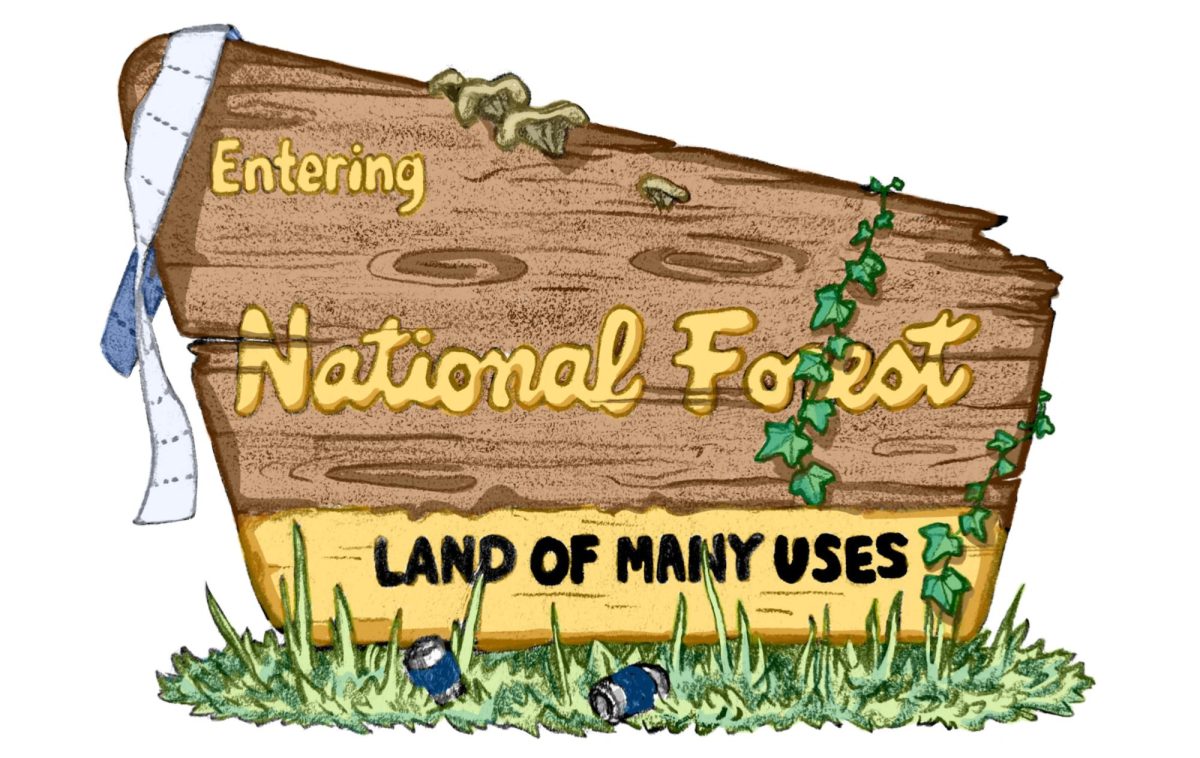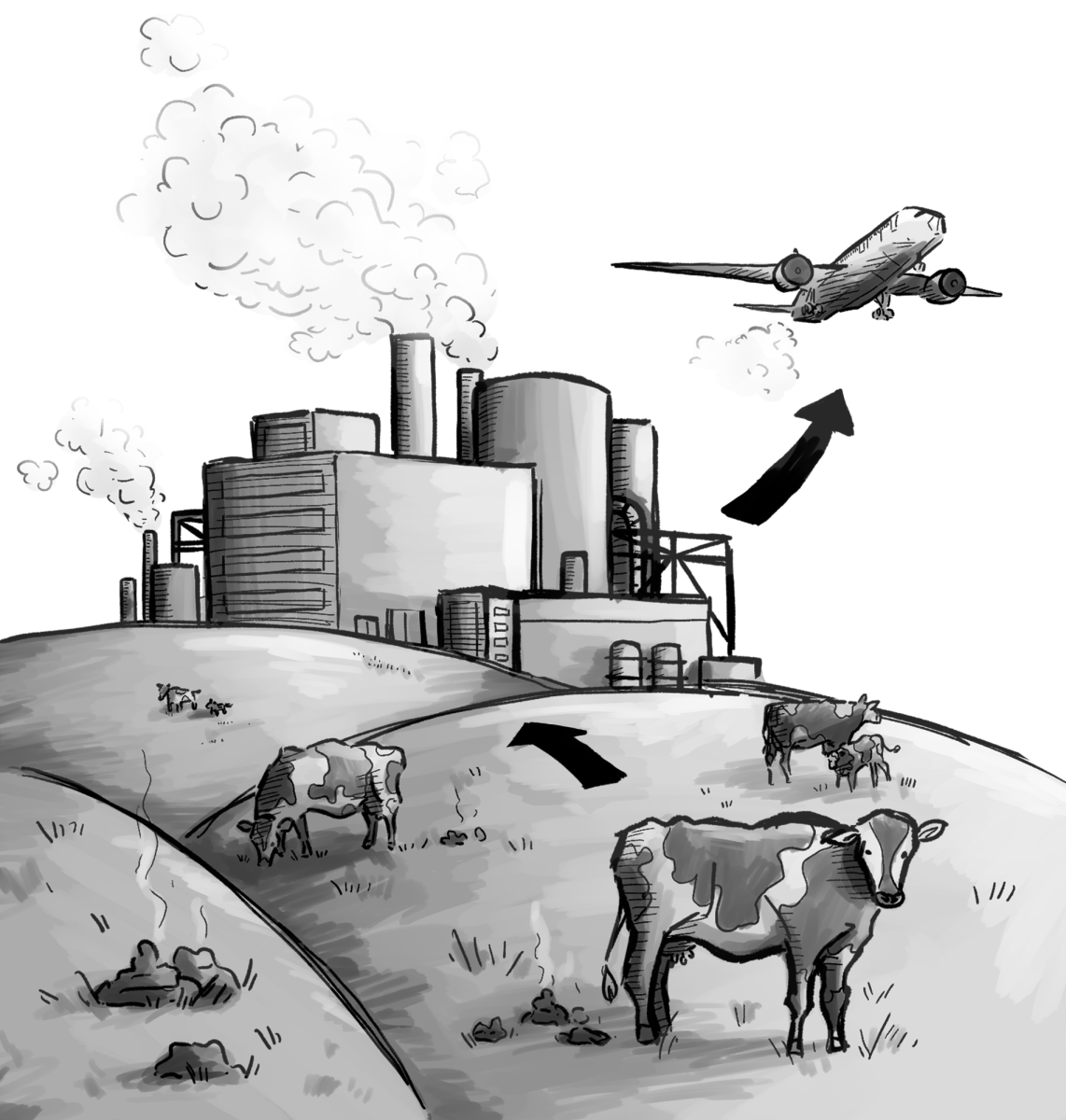
In the landscape of today’s social media, the cult of consumerism reigns supreme. In the mix of Paul Mescal edits, photo dumps, tattoo flash sheets and horrible news of another dying species, something is always being sold. Even with the Federal Trade Commission (FTC ) setting laws requiring sponsorship disclosure, TikTok and Instagram have found sneaky and convenient ways to encourage the culture of consumption. The appeal of excess finds its way into almost everything these days: widespread photos of Khloe Kardashian’s pantry, “restock” tok, an internet obsession with putting everything into clear plastic containers, “sing-if-you-own” videos and the “eco” favorite Stanley Cup.
Unfortunately for environmentalists, there isn’t much “green” benefit in owning six of the same cup, and you should probably avoid internet trends that might give you lead poisoning. Despite the logic that could theoretically dissuade someone from needing to buy a clear acrylic egg holder for purely aesthetic purposes, consumption has never been higher, and social media is one of the main marketing tools for advertisers today.
Psychology Professor and Chair of the Whitman Psychology Department Matthew Prull spoke about why it feels so good to purchase.
“It’s enjoyable to buy something, [a] sweater or whatever it is you’ve had your eye on … So one major area of the brain is called the VTA (ventral tegmental area). It’s a dopamine-producing area of the brain, and so the thought is that when we purchase something, we get a little dopamine hit in that part of the brain that feels good,” Prull said. “So it’s rewarding, obviously. And what we know also from over 120 years or so ago, a psychologist named Edward Thorndike said anytime you do something that results in a satisfactory outcome, you’re going to do it again, and he called that the law of effect. So if you buy something, you get a hit of neurotransmitter dopamine that’s rewarding. It’s reinforcing. So you’re likely to do that again.”
Almost all social media platforms are now noticeably structured around this “law of effect,” TikTok being the most obvious example. The whole platform is algorithmically structured to keep you scrolling and has provided the means to take as few breaks as possible from the “For You” page to buy the things being advertised. The cycle of consumption is even harder to break for young people, who increasingly are developing a sense of self through the lens of the internet. When identity is being formed by the very system that feeds you the message that “more is more”, it is deceivingly hard to split away from that habit.
On the addictive nature of consumption, sophomore Kshiteesh Sharma provided insight.
“I used to use a lot of Instagram and I used to see all these athletes wear different kinds of shoes and I used to think that if the athletes are wearing it, they must be cool. So I should buy it too. And I used to literally buy at least a pair of shoes every week. I didn’t even know that it was so hollow. It wasn’t making me fulfilled. I used to feel good after two or three days, though I had the desire again to buy another one,” Sharma said. “By the end of the week, I would buy another one, and then I would just take that loop of thinking that it’s making me feel good. It’s making me feel more recognized around my peers, my peers are going to respect me more for buying it because I’m spending money, but it wasn’t really doing anything.”
While most people can go into a brick-and-mortar store and resist buying a product, seeing it in a “must-haves for a tomato girl summer haul” (or whatever niche internet identity you’re looks-maxxing towards) suddenly makes the appeal virtually undeniable. November 2022 marked the launch of TikTok Shop, which has been updated since its inception to allow app users to see a product for the first time and buy it in as few as three clicks. This, in conjunction with the suspiciously dirt-cheap prices of companies like Shein, is leaving doors open to overconsumption and environmental degradation.
A new strain of social media influencers has begun to hit platforms in opposition to this culture, calling themselves “deinfluencers.” In theory, these deinfluencers break up the mindless scroll, reminding viewers that they don’t need to consume. They run through multiple popular products, foregrounding their negative reviews to break the mystification around many of these products.
Thus, through the interruption of the monotony of social media consumption, deinfluencers are resisting the “law of effect.” While some of these videos are just sales pitches in disguise, the vast majority serve to remind you of those long-swallowed morals of not littering and fair wages, forgotten in the name of automatic car trash cans and apartment-friendly walking treadmills.
Prull spoke on the subtle cues that social media provides to guide users towards consumption.
“There’s a perspective in behavioral economics that’s called nudge theory, which means to get people to make better choices, like healthier choices or eating more fruits and vegetables or saving more for retirement or something like that,” Prull said. “One example that I like to use is sometimes you see in grocery stores, there might be little footstep tracks or arrows that point and take you right to the leafy greens. So you walk in and go, ‘Oh, I wonder where that leads,’ and you mindlessly follow the tracks and then suddenly you’re standing right next to the spinach. You go, ‘Oh, OK.’ So it becomes easier for you to buy the spinach. And it sounds like that’s [TikTok Shop], although it may be less of a nudge and more scheming, diabolical, in a way.”
TikTok Shop and its army of influencers are engaged in nudge theory, trying to lead people towards something that they hadn’t originally thought they wanted. This is what deinfluencers are working against, because mindless consumption adds up in its environmental effects. In April 2024 alone, over 885 million tons of natural resources have been extracted for manufacturing consumer products, over 2.8 trillion tons of groundwater have been polluted and an estimated $26 million are spent every minute manufacturing consumer products.
The nudge theory works so well in part because prices can stay low. The globalization of industry and containerization of finished products has created a “race to the bottom” within factories, port cities and various other producers and distributors. Just this month, over $1.5 trillion of profits have been generated through slave labor, and an estimated 152 million children are child laborers, with over two-thirds of them working in hazardous conditions.
Sophomore Ali Kirk spoke on her own reservations about fast-fashion consumption.
“I definitely, in high school, had my moment with Shein, and then I realized, that’s horrible. I never want to purchase from a company like that again. But then there’s the $750 gift cards that Shein gives out for free that you see advertised on TikTok, and then people are getting 200 items of clothing that will fall apart in a week. It’s just ridiculous,” Kirk said.
The harmful effects of consumption don’t stop with humanitarian harms and resource extraction, but continue with the post-consumer waste building exponentially. The plastic that permeates most in packaging is often the least likely to find a home beyond the landfill. But once the Amazon box is out of sight, for many, it’s out of mind, and the disappointment of a $2.50 shirt disintegrating in the washing machine is about as significant as the $2.50 you spent buying it.
Even with the negative reviews and capitalism call-outs coming from deinfluencers, consumption has never been higher. Part of this problem is the consumer’s lack of a relationship with the product. For many reasons, you as the purchaser will never see the inside of a Shein factory. Capitalism thrives on the alienation of one from their own — and others’ — labor and obscuring the logic of why you can buy a cushioned car seat set, two leather briefcases, a six-foot volcano-equipped aquarium and a wedding dress, all for under $50 on Wish.com.
It is impossible not to consume, and impossible for 99% of the world population to “ethically” consume. There are absolutely ways to avoid unnecessary purchases, but perhaps establishing a relationship with your product beyond just one of aspiration is key to not falling into the cult of consumption. This is part of the goal of deinfluencing, and the brands these deinfluencers seek to uplift in substitution of corporations like Shein are brands looking to cultivate healthier relationships between consumption and creation of products. Companies like Sheep INC – a carbon-negative cashmere brand – may offer more expensive products compared to their fast-fashion counterparts, but also offer extensive information about where their products come from, who made them and how to repair them when they deteriorate.
This is by no means a call to cashmere-purchasing action, but rather the opposite. The most lucrative thing that the layperson can do to “environmentally” consume is not to replace everything with “environmentally friendly” products, but to develop a deeper relationship and respect for who, and how you consume.






